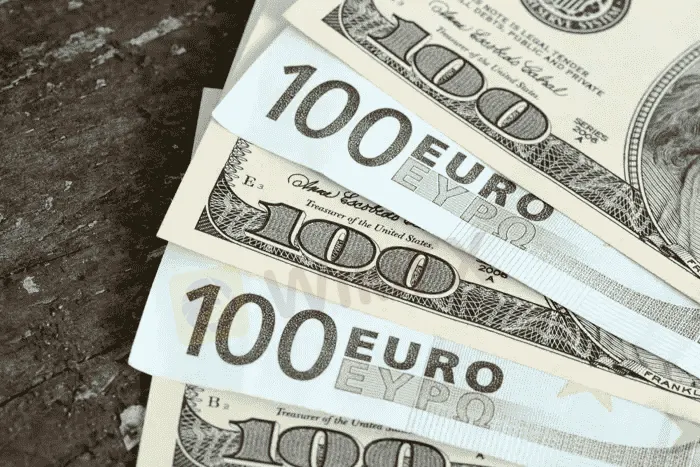简体中文
繁體中文
English
Pусский
日本語
ภาษาไทย
Tiếng Việt
Bahasa Indonesia
Español
हिन्दी
Filippiiniläinen
Français
Deutsch
Português
Türkçe
한국어
العربية
ECB Economic Bulletin Pressures the EUR/USD Ahead of US CPI Report
Abstract:It has been a bearish morning for the EUR/USD, with the ECB Economic Bulletin highlighting the economic pitfalls of bringing inflation to target.

It was a busier day for the EUR/USD on the economic calendar. Italian industrial production figures drew interest this morning.
Production slid by 1.8% in September versus a 2.3% rise in August. Economists forecast a 1.5% decline. Year-over-year, industrial production was down 0.5% versus a 2.9% increase in September. Economists forecast a 0.9% increase, year-over-year.
However, investors brushed aside the numbers, which coincided with the ECB Economic Bulletin.
ECB Economic Bulletin Provides Little EUR Comfort
This morning, the ECB released issue 7 of the 2022 Economic Bulletin. Investor concerns over the economic outlook and inflation have given the Economic Bulletin more voice in recent months.
Salient points from the Bulletin included,
Inflation remains too high and will stay above the target for an extended period.
Global economic activity contracted in Q2 2022, with survey data pointing to subdue growth momentum near-term.
Economic activity in the euro area is likely to have slowed significantly in Q3 2022.
The Governing Council expects further weakening in the remainder of 2022 and the beginning of 2023.
High inflation continues to weigh on spending and production, with demand for services slowing and new orders in the manufacturing sector waning.
Geopolitical uncertainty persists amid tighter financial conditions and worsening trade terms. Prices paid for imports are rising at a faster pace than those received for exports.
While labour market conditions remained steady in Q3, weaker economic activity could lead to higher unemployment.
Looking more closely at inflation,
While supply bottlenecks are easing, the effects of pent-up demand are still pushing prices higher in the services sector.
Depreciation in the EUR has exasperated the inflation problem.
Strong labour market conditions are likely to push wages higher.
ECB Risk Assessment Slanted to the Downside
According to the Bulletin, incoming data confirms that risks to the economic growth outlook are on the downside. A long-lasting war in Ukraine remains a significant risk. The ECB also sees the possibility of confidence deteriorating and supply-side constraints worsening again.
The ECB also noted that energy and food prices could remain persistently higher than expected. A weakening global economy could become an additional headwind for euro area growth.
Additionally, risks to the inflation outlook are primarily to the upside, with another rise in energy prices a risk.
There were few surprises in the Economic Bulletin, with Wednesdays pre-Economic Bulletin release touching on inflation in response to the Consumer Expectations survey.
EUR Responds to the Consumer Expectations Survey
The EUR/USD fell from $0.99918 to a post-Bulletin low of $0.99758.

Todays Bulletin followed comments from ECB President Lagarde on Monday, who reiterated that inflation was too high and that rates would rise to combat inflation and bring it to target.
The bulletin highlighted the challenges that the ECB and other central banks face in taming inflation amid a weakening economic environment. This has resulted in increased volatility, as the markets attempt to second guess the next moves.
At the time of writing, the EUR/USD was down 0.29% to $0.99828. While down for the session, the US CPI report for October could prove pivotal later today. The markets are betting on a Fed pivot. A strong CPI report could see the EUR/USD test buyers at $0.99.


Disclaimer:
The views in this article only represent the author's personal views, and do not constitute investment advice on this platform. This platform does not guarantee the accuracy, completeness and timeliness of the information in the article, and will not be liable for any loss caused by the use of or reliance on the information in the article.
Read more

What Euro Investors Can't Afford to Miss
For euro investors, geopolitical factors, inflation data, and the European Central Bank's policy direction will determine the market trends over the next few months.

How Big is the Impact of the USD-JPY Rate Gap on the Yen?
The U.S. Federal Reserve's repeated rate cuts and the narrowing of the U.S.-Japan interest rate differential are now in sight. So, why is the U.S.-Japan interest rate differential so important for the yen’s safe-haven appeal, especially when global economic uncertainty rises?

Malaysian Man Killed in Alleged Forex Dispute-Related Attack
A 44-year-old Malaysian businessman, Wong Kai Lai, died after being attacked by about 20 men in Jenjarom, Kuala Langat, on 19 December. Police believe the attack may have been linked to a foreign currency exchange dispute.

Stablecoins: The New Frontier in Digital Finance?
In 2024, while Bitcoin’s surge past US$100,000 captured global attention, financial institutions turned their focus to stablecoins. Will stablecoins be the new frontier in digital finance for the year of 2025?
WikiFX Broker
Latest News
Will Gold Break $2,625 Amid Fed Caution and Geopolitical Risks?
ECB Targets 2% Inflation as Medium-Term Goal
New Year, New Surge: Will Oil Prices Keep Rising?
PH SEC Issues Crypto Guidelines for Crypto-Asset Service Providers
FTX Chapter 11 Restructuring Plan Activated: $16 Billion to Be Distributed
Bithumb CEO Jailed and Fined Over Bribery Scheme in Token Listing Process
WikiFX Review: Something You Need to Know About Saxo
Is PGM Broker Reliable? Full Review
Terraform Labs Co-founder Do Kwon Extradited to the U.S. to Face Fraud Charges
Has the Yen Lost Its Safe-Haven Status?
Currency Calculator






